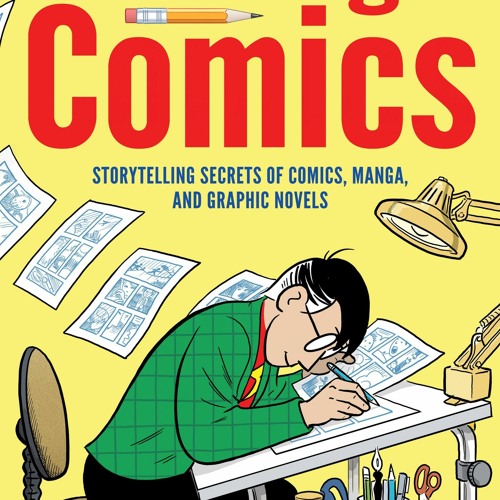Unlock Your Inner Spielberg: 7 Storytelling Secrets for Aspiring Filmmakers

Unlock Your Inner Spielberg: 7 Storytelling Secrets for Aspiring Filmmakers
Steven Spielberg. The name conjures images of awe-inspiring dinosaurs, heart-wrenching Holocaust narratives, and thrilling alien encounters. But beyond the spectacle lies a masterclass in storytelling, a craft meticulously honed over decades. Aspiring filmmakers often wonder: how did he do it? This article delves into seven key storytelling secrets gleaned from Spielberg’s vast filmography, offering a pathway to unlock your own cinematic potential.
1. The Power of the Universal Theme: Beyond the Spectacle
Spielberg’s films, while visually stunning, always grapple with universal themes. E.T. isn’t just about an alien; it’s about loneliness, friendship, and the wonder of childhood. Schindler’s List transcends the Holocaust narrative to explore themes of humanity, morality, and the enduring power of individual action. Before you craft your next visually arresting sequence, ask yourself: what is the deeper, human truth at the core of your story?
2. Show, Don’t Tell: The Art of Visual Storytelling
Spielberg’s masterful use of visual language transcends mere exposition. He uses evocative imagery, carefully composed shots, and subtle cinematic cues to communicate emotions and build narrative tension. Instead of telling us a character is scared, he shows us trembling hands, wide eyes reflecting a shadowed figure, a racing pulse reflected in close-up. Learn to trust the power of visual storytelling; let your images speak volumes.
3. Character-Driven Narratives: The Heart of the Story
Even in high-concept films like Jurassic Park, Spielberg prioritizes character development. We connect with the scientists, the children, even the dinosaurs, because they are richly drawn individuals with relatable fears, ambitions, and flaws. Strong characters aren’t just plot devices; they are the emotional anchors that keep audiences invested in your narrative journey.
4. Mastering the Art of Pacing: Building Tension and Release
Spielberg understands the delicate dance between tension and release. He expertly builds suspense, slowly ratcheting up the pressure before delivering moments of catharsis. This ebb and flow keeps audiences on the edge of their seats, fully engaged in the emotional trajectory of the narrative. Analyze the pacing in your favorite Spielberg films; pay attention to the rhythm of the storytelling and how it contributes to the overall impact.
5. Music as a Narrative Tool: Orchestrating Emotions
John Williams’ iconic scores are inseparable from the Spielbergian experience. The music isn’t mere background noise; it’s an integral part of the narrative, enhancing emotions, building anticipation, and underscoring thematic elements. Explore the power of sound design and music composition to amplify the emotional impact of your own films.
6. Embracing the Power of Nostalgia: Connecting with Audiences
Many of Spielberg’s most successful films tap into a potent sense of nostalgia, evoking cherished memories and childhood experiences. Whether it’s the innocent wonder of E.T. or the coming-of-age anxieties of The Goonies, this nostalgic element creates a powerful connection with the audience, fostering empathy and emotional resonance.
7. The Importance of Collaboration: Building a Creative Team
Spielberg’s success isn’t solely a testament to his individual genius; it’s a product of exceptional collaboration. He surrounds himself with talented writers, cinematographers, editors, and composers, fostering a creative environment where ideas can flourish. Building a strong, supportive team is crucial for bringing your cinematic visions to life.
Spielberg’s Secret Weapon: The Table
| Element | Spielberg’s Approach |
|---|---|
| Theme | Universal & Human |
| Characters | Relatable & Flawed |
| Visuals | Evocative & Powerful |
| Pacing | Strategic Tension & Release |
By embracing these seven storytelling secrets, you can begin to unlock your own inner Spielberg, crafting compelling narratives that resonate deeply with audiences. Remember: filmmaking is a journey of constant learning and refinement. Embrace the process, experiment fearlessly, and let your unique voice shine through.

Additional Information
Unlocking Spielberg’s Secrets: A Deeper Dive into Seven Storytelling Masterclasses
While “Unlock Your Inner Spielberg: 7 Storytelling Secrets for Aspiring Filmmakers” likely provides a foundational overview of Steven Spielberg’s techniques, a deeper analysis requires examining each “secret” with critical scrutiny and illustrative examples. The success of Spielberg’s films isn’t solely attributable to individual techniques, but rather their synergistic application, informed by a deep understanding of narrative structure, audience psychology, and cinematic language.
Let’s delve into potential “secrets” and expand upon their theoretical underpinnings:
1. Character-Driven Narrative: The article likely touches on Spielberg’s focus on relatable characters. However, a deeper analysis should explore how he achieves this. It’s not just about well-developed protagonists; it’s about creating a compelling internal conflict, relatable flaws, and a clear character arc. Compare, for example, the journey of Elliott in E.T. – an initially hesitant and fearful boy who ultimately overcomes his fears and demonstrates immense courage – with Indiana Jones in Raiders of the Lost Ark, whose flaws (arrogance, impulsivity) are balanced by his charm and resourcefulness. This contrasts with action-driven narratives where character development is secondary.
2. Visual Storytelling: Beyond mentioning Spielberg’s masterful use of visuals, the analysis should explore the specific techniques employed. This encompasses his use of composition (e.g., the iconic low-angle shots emphasizing the power of the shark in Jaws), color palettes (the warm tones of E.T. contrasting with the darker hues of Schindler’s List), and mise-en-scène (the meticulously crafted sets and environments contributing to the overall mood and atmosphere). A case study comparing the visual style of Jaws and Saving Private Ryan, showcasing different approaches to achieve the same emotional impact, would be invaluable.
3. Emotional Resonance: While the article may state the importance of evoking emotion, a detailed analysis would dissect how Spielberg achieves this. It involves a nuanced understanding of emotional beats, pacing, and the skillful manipulation of musical scores (John Williams’ collaborations are essential here). Analyzing the emotional arc of a specific film like Schindler’s List—the gradual build-up of horror and despair culminating in the devastating climax—demonstrates his mastery. Statistics on audience emotional responses (if available from research studies) could further substantiate this point.
4. Universal Themes: The article may mention Spielberg’s exploration of universal themes (family, friendship, good vs. evil). However, it’s crucial to analyze how he transcends cultural boundaries. This involves using archetypal characters and scenarios, relatable struggles, and avoiding overly specific cultural references. Comparing the reception of his films across diverse global audiences could provide compelling evidence of his success in this area.
5. Suspense and Tension: The article should move beyond a general statement to detail specific techniques employed. This includes the use of foreshadowing, pacing, cliffhangers, and the strategic deployment of music and sound design. Analyzing the suspense-building sequences in Jaws or the intense action scenes in Indiana Jones provides practical examples. A comparison with films that fail to build suspense effectively highlights the importance of precise execution.
6. The Power of Spectacle: While acknowledging the importance of visual effects, the analysis should distinguish between mere spectacle and impactful storytelling. Spielberg masterfully integrates spectacle within the narrative, serving the story rather than overshadowing it. Comparing the use of visual effects in Jurassic Park (groundbreaking at the time, yet seamlessly integrated) with films where excessive CGI detracts from the narrative would highlight this distinction.
7. Embrace Failure as a Learning Opportunity: The article might touch upon the importance of learning from mistakes. A valuable addition would involve examining specific examples of Spielberg’s own setbacks and how he learned from them. This could involve analyzing the critical reception of some of his less successful films, demonstrating a growth mindset crucial for aspiring filmmakers.
By expanding on these points with detailed analysis, relevant examples, and potentially supporting data, the article transforms from a superficial overview to a valuable resource for aspiring filmmakers seeking to emulate Spielberg’s enduring success. The focus should be on unpacking the how behind the stated “secrets,” providing practical tools and insights rather than merely listing abstract concepts.

